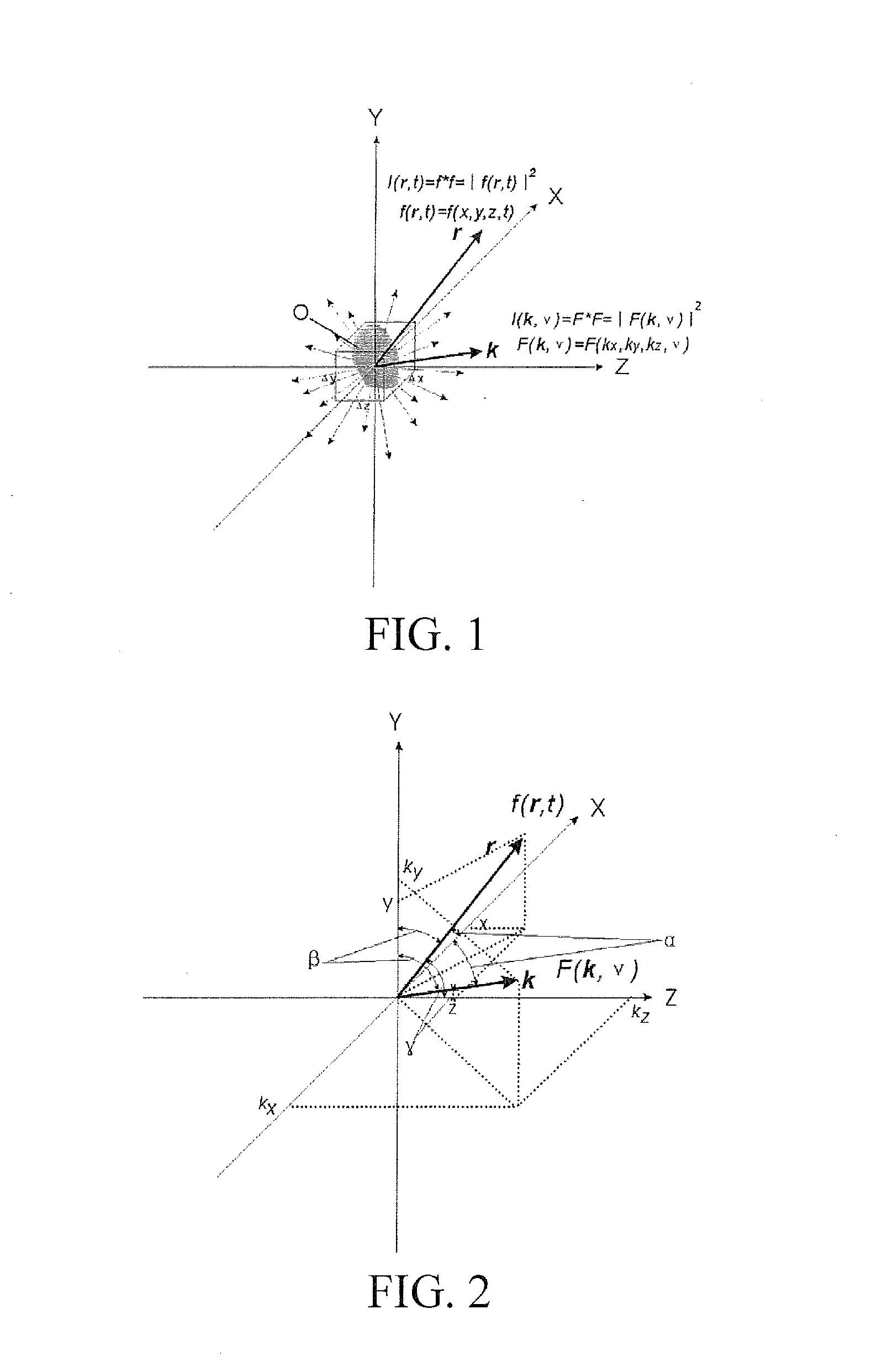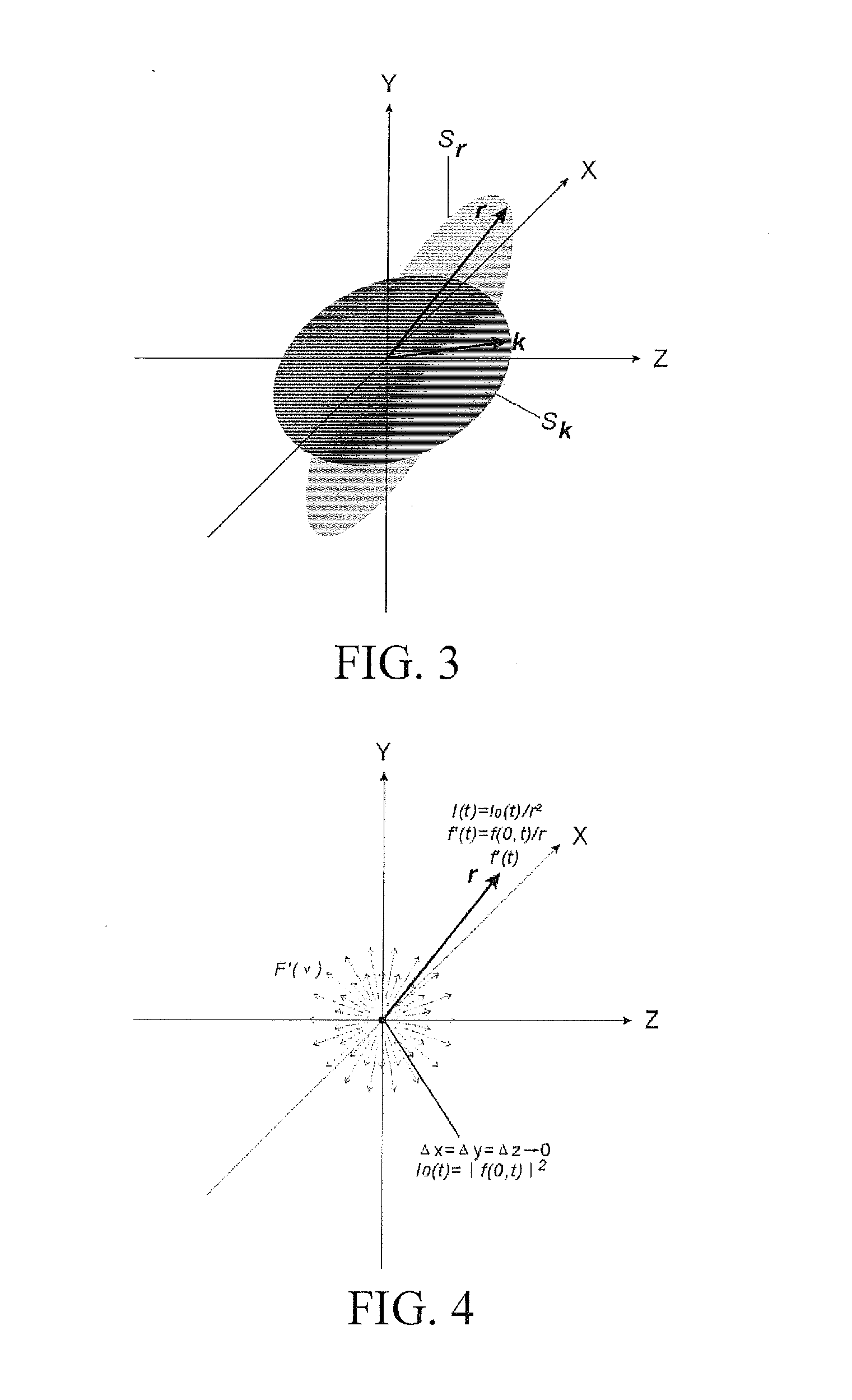Holographic projection real-time 3D display system and method
- Summary
- Abstract
- Description
- Claims
- Application Information
AI Technical Summary
Benefits of technology
Problems solved by technology
Method used
Image
Examples
Embodiment Construction
[0090]The present invention is further described below in detail with reference to embodiments and the accompanying drawings.
[0091]Embodiments of the present invention are made based on new theories, and theories related to the embodiments of the present invention are illustrated before the embodiments are described.
[0092]I. Four-Dimensional (4D) Fourier Transform of Wave Function
[0093]Light is formed of photons. Each photon has the minimum electromagnetic radiation energy thereof satisfying ε=hv, where h is the Planck constant and satisfies h=6.626×10−34 J·S, v is a vibration frequency of the photon whose wavelength satisfies λ=c / v, and c is the speed of light, which is in vacuum a constant c=2.997 924 58×108 m / s. A corresponding momentum of the photon satisfies p=hk, where k is a propagation vector, and satisfies k=1 / λ. The above is consistent with the special theory of relativity, and a relationship among the mass, energy, and momentum of the particle herein satisfies ε=[(cp)2+(m...
PUM
 Login to View More
Login to View More Abstract
Description
Claims
Application Information
 Login to View More
Login to View More - R&D
- Intellectual Property
- Life Sciences
- Materials
- Tech Scout
- Unparalleled Data Quality
- Higher Quality Content
- 60% Fewer Hallucinations
Browse by: Latest US Patents, China's latest patents, Technical Efficacy Thesaurus, Application Domain, Technology Topic, Popular Technical Reports.
© 2025 PatSnap. All rights reserved.Legal|Privacy policy|Modern Slavery Act Transparency Statement|Sitemap|About US| Contact US: help@patsnap.com



